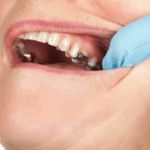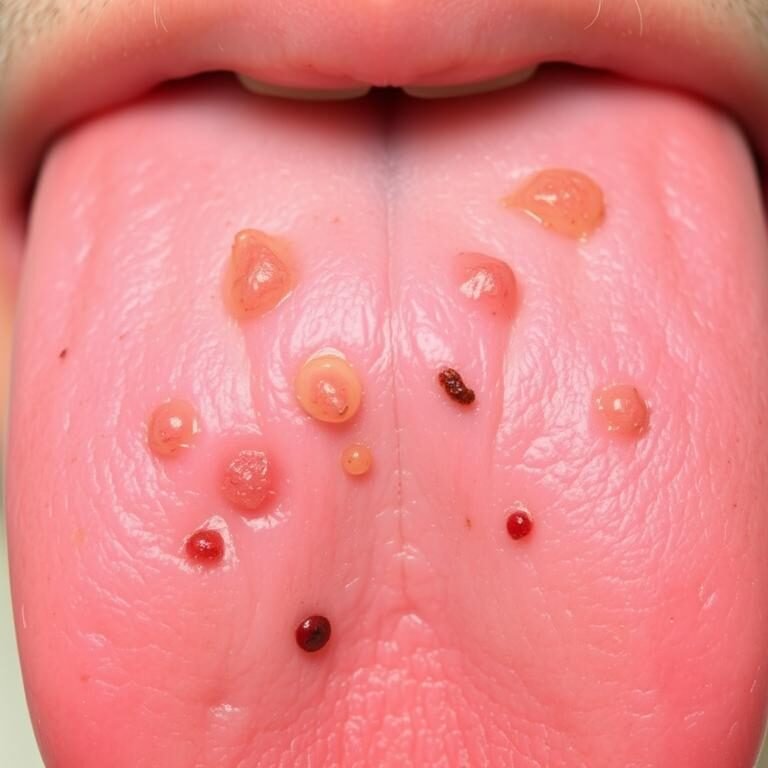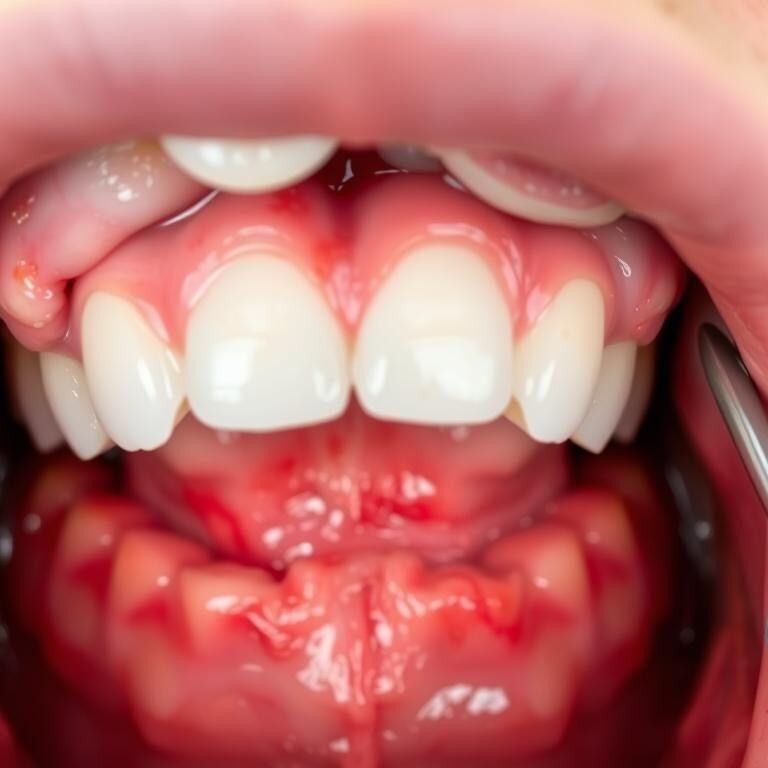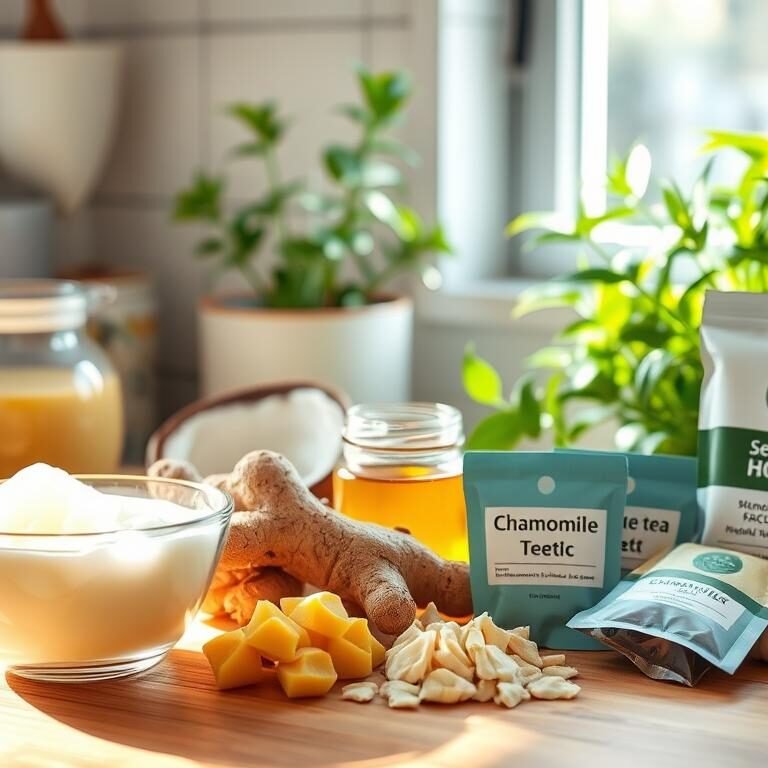Table of Contents
How Baby Bottle Tooth Decay Develops
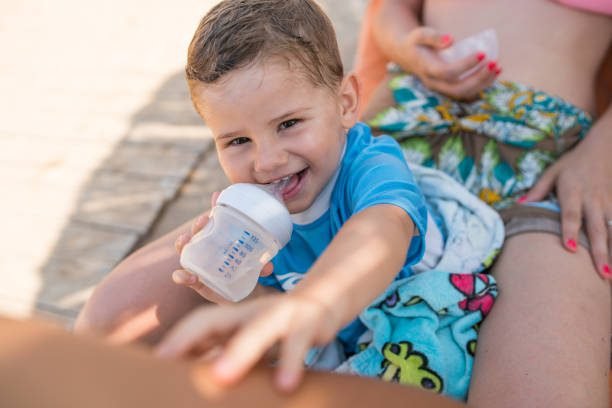
Baby bottle tooth decay, also known as early childhood caries, is a common dental condition that affects infants and young children. It occurs when the teeth are frequently exposed to sugary substances, such as formula, juice, or milk, for an extended period of time. This prolonged exposure to sugars creates an ideal environment for bacteria in the mouth to produce acids that attack the tooth enamel, leading to tooth decay.
One of the main culprits behind baby bottle tooth decay is the practice of putting an infant to bed with a bottle filled with sugary liquids. As the child sleeps, their mouth becomes a breeding ground for bacteria, as the sugars in the liquids they consume pool around their teeth. Over time, this repetitive exposure to sugars can erode the protective enamel, causing cavities and decay.
Another contributing factor to the development of baby bottle tooth decay is the frequent use of pacifiers dipped in sugary substances. Similar to bottle feeding, prolonged exposure to sugars from pacifiers can contribute to the erosion of tooth enamel, especially if the pacifier is dipped in sweetened liquids or substances like honey or syrup. By understanding how baby bottle tooth decay develops, parents and caregivers can take proactive steps to prevent this dental condition and promote optimal oral health in infants.
The Importance of Proper Oral Hygiene in Infants

Proper oral hygiene in infants is of utmost importance for their overall health and well-being. Establishing good oral care habits from an early age can help prevent dental issues and lay the foundation for a lifetime of healthy teeth and gums.
Maintaining oral hygiene in infants involves a few key practices. Firstly, it is important to gently clean their gums with a soft, damp cloth or a finger brush even before their first tooth erupts. This helps to remove bacteria and prevent the buildup of plaque. Secondly, as soon as the first tooth appears, it is essential to start brushing it with a soft-bristled toothbrush and a smear of fluoride toothpaste. This helps to protect against tooth decay and strengthen the enamel. Additionally, parents should ensure that infants are not constantly exposed to sugary liquids or snacks, as excessive sugar consumption can contribute to tooth decay. By following these simple steps, parents can promote good oral hygiene in their infants and set them up for a lifetime of healthy smiles.
Understanding the Role of Baby Bottles and Pacifiers in Tooth Decay
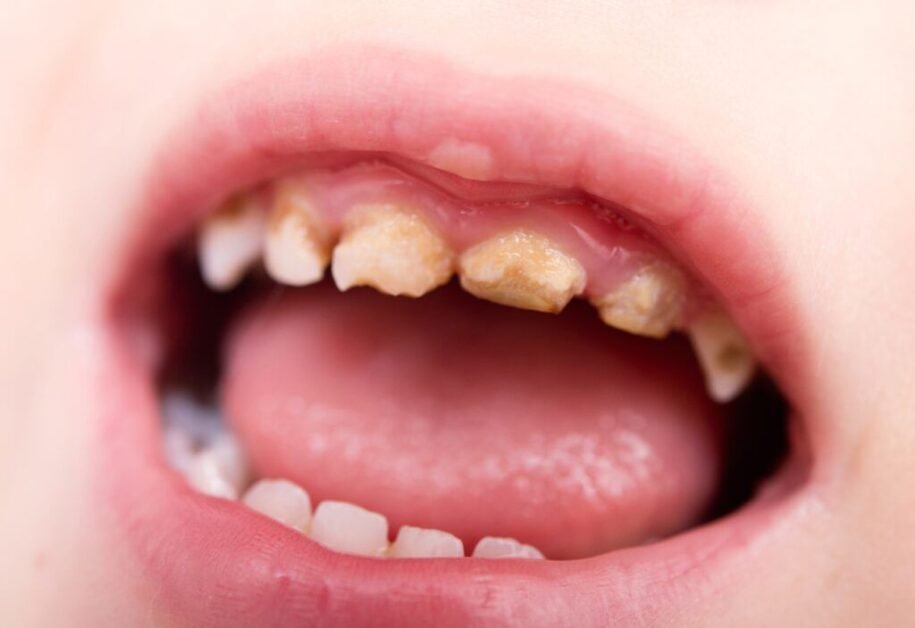
Baby bottles and pacifiers are commonly used by infants for feeding and soothing purposes. However, it is important for parents to understand the role these items can play in the development of tooth decay in their little ones. When babies are consistently exposed to sugary liquids such as formula, juice, or milk through prolonged and frequent bottle or pacifier use, it can lead to a condition known as baby bottle tooth decay.
The interaction between the sugars in these liquids and the bacteria in the mouth creates acids that attack the teeth, causing decay. The prolonged exposure to these acids can result in the deterioration of dental enamel, leading to cavities and other dental problems. This decay often affects the front teeth first, but it can spread to other teeth if left untreated. Understanding the role that baby bottles and pacifiers play in the process of tooth decay is crucial for parents in order to take preventive measures and ensure the oral health of their infants.
Identifying the Signs and Symptoms of Baby Bottle Tooth Decay
Baby bottle tooth decay is a common dental problem that affects infants and young children. It is important for parents and caregivers to be able to identify the signs and symptoms of this condition in order to seek timely treatment and prevent further damage to the child’s teeth. One of the earliest indicators of baby bottle tooth decay is the appearance of white or brown spots on the child’s teeth. These spots usually develop on the front teeth, but can also be found on the back teeth. In some cases, the teeth may become pitted or have visible holes. Another common sign is gum redness and swelling, especially around the affected teeth. Additionally, children with baby bottle tooth decay may experience pain or sensitivity in their teeth or gums, and they may have difficulty eating or speaking comfortably. If you notice any of these signs or symptoms in your child, it is important to consult a dentist for a proper diagnosis and treatment plan.
Prevention and early intervention are key when it comes to baby bottle tooth decay. By identifying the signs and symptoms early on, parents and caregivers can take necessary steps to protect their child’s oral health. Regular dental check-ups are essential for monitoring the child’s teeth and identifying any potential issues. Establishing a proper oral care routine from an early age, including brushing the child’s teeth twice a day with a fluoride toothpaste, can help prevent baby bottle tooth decay. Additionally, avoiding prolonged and frequent exposure to sugary drinks and foods can significantly reduce the risk of tooth decay. It is also important to avoid letting the child fall asleep with a bottle containing anything other than water, as this can increase the risk of tooth decay. By being vigilant and proactive in looking for signs and symptoms of baby bottle tooth decay, parents can help ensure their child’s dental health and overall well-being.
The Impact of Sugar and Carbohydrates on Dental Health
Sugar and carbohydrates have a significant impact on dental health, especially in infants and young children. These substances, when consumed in excess, can lead to tooth decay and cavities. The reason behind this lies in the bacteria that naturally reside in our mouths. When we consume sugar and carbohydrates, these bacteria feed on these substances and produce acids as a byproduct. These acids can then attack the enamel, the outer layer of our teeth, and eventually lead to tooth decay if left untreated.
It is important to note that it’s not just the amount of sugar and carbohydrates consumed that matters, but also the frequency and duration of exposure. Continuous snacking and sipping on sugary drinks or foods throughout the day can create a constant acidic environment in the mouth, which can be particularly damaging to baby teeth that are still developing and more susceptible to decay. Therefore, it is crucial for parents and caregivers to monitor and manage their infant’s intake of sugar and carbohydrates, and promote a healthy and balanced diet.
To prevent dental caries in infants and young children, the American Academy of Pediatrics (AAP) recommends the following:
| Age group | Recommendations |
|---|---|
| Infants | Clean your baby’s gums with a soft, clean cloth after feeding. Once teeth appear, brush them twice a day with a soft-bristled toothbrush and a smear of fluoride toothpaste. |
| Toddlers | Brush your child’s teeth twice a day with a pea-sized amount of fluoride toothpaste. Encourage your child to spit out the toothpaste, but don’t rinse with water. |
| Children aged 3-6 | Brush your child’s teeth twice a day with a pea-sized amount of fluoride toothpaste. Encourage your child to spit out the toothpaste, but don’t rinse with water. |
| Children aged 6 and older | Brush your child’s teeth twice a day with a pea-sized amount of fluoride toothpaste. Encourage your child to spit out the toothpaste, but don’t rinse with water. Floss daily. |
Choosing the Right Baby Bottle and Nipple for Dental Health
Choosing the right baby bottle and nipple is crucial for maintaining optimal dental health in infants. The type of bottle and nipple you select can significantly impact your baby’s oral development and prevent the occurrence of dental problems in the future.
First and foremost, it is important to choose a bottle that is free of harmful chemicals, such as bisphenol A (BPA). BPA has been linked to various health issues and should be avoided. Look for bottles that are labeled as BPA-free to ensure the safety of your baby’s oral health.
Secondly, consider the shape and size of the nipple. It is recommended to choose a nipple that closely resembles the shape of the mother’s breast. This can help promote proper tongue positioning and reduce the risk of nipple confusion while breastfeeding. Additionally, opt for a nipple with a slow flow rate to prevent your baby from ingesting large amounts of milk too quickly, which can lead to tooth decay.
In conclusion, selecting the right baby bottle and nipple is essential for promoting dental health in infants. By choosing a BPA-free bottle and a nipple that is similar to the shape of the mother’s breast, you can contribute to the proper oral development of your baby. Remember to consult with your pediatric dentist for further guidance on selecting the most suitable bottle and nipple for your little one.
Establishing a Proper Oral Care Routine for Infants
Establishing a proper oral care routine for infants is essential in promoting their dental health and preventing tooth decay. While infants may not have all their teeth yet, it’s important to start practicing good oral hygiene habits from an early age.
First and foremost, it’s crucial to clean your baby’s gums regularly, even before the first tooth erupts. Gently wiping their gums with a soft, damp cloth or using a silicone finger brush can help remove bacteria and prevent the buildup of harmful plaque. As the teeth start to emerge, switch to using a soft-bristled toothbrush specifically designed for infants. Be gentle while brushing to avoid discomfort or irritation.
In addition to brushing, establishing a routine of regular dental visits is essential for your infant’s oral health. The American Academy of Pediatric Dentistry recommends scheduling the first dental visit within six months after the first tooth erupts or by the age of one. These early dental visits allow the dentist to monitor the development of your baby’s teeth and gums, address any concerns, and provide guidance on proper oral care techniques. Remember, prevention is key, and starting early with good oral care habits sets the foundation for a lifetime of healthy smiles.
Tips for Cleaning and Sanitizing Baby Bottles and Pacifiers
Cleaning and sanitizing baby bottles and pacifiers is essential to maintain good oral hygiene in infants and prevent the development of baby bottle tooth decay. Here are some tips to ensure proper cleaning and sanitization:
1. Wash bottles and pacifiers after every use: As soon as your baby finishes a bottle or pacifier, it’s important to wash them thoroughly. Use warm water and mild dish soap to clean all parts, including nipples, bottle caps, and pacifier shields. Rinse them well to remove any soap residue.
2. Sterilize regularly: To kill any remaining bacteria, it is recommended to sterilize bottles and pacifiers regularly, especially during the first few months when your baby’s immune system is still developing. You can use a sterilizer, or simply boil them in water for 5-10 minutes. Be sure to let them cool before giving them to your baby.
3. Pay attention to hard-to-reach areas: Bottles and pacifiers can have crevices and hard-to-reach areas where bacteria can hide. Use a bottle brush with soft bristles to scrub all surfaces thoroughly. For pacifiers, pay close attention to the nipple and the plastic shield.
4. Avoid using abrasive cleaners: Harsh chemicals or abrasive cleaners can damage the materials of the bottles and pacifiers. Stick to mild dish soap and warm water for cleaning. If you prefer, you can also use baby-specific bottle cleaners that are designed to be gentle and safe for your little one.
5. Air-dry bottles and pacifiers: After cleaning and sterilizing, it’s important to let bottles and pacifiers air-dry completely. Place them on a clean towel or drying rack, avoiding any surfaces that may introduce bacteria. Avoid drying them with a cloth or towel, as these can leave fibers behind.
By following these tips, you can ensure that your baby’s bottles and pacifiers are clean and free from harmful bacteria, helping to promote good oral health and prevent baby bottle tooth decay.
The Role of Diet in Preventing Baby Bottle Tooth Decay
Diet plays a crucial role in preventing baby bottle tooth decay. The foods and beverages that infants consume can have a significant impact on their dental health. It is essential for parents to understand the relationship between diet and tooth decay to make informed choices for their little ones.
One of the primary factors contributing to tooth decay is the consumption of sugary and carbohydrate-rich foods and drinks. These substances can feed the bacteria in the mouth, leading to the production of acids that attack the teeth. Therefore, it is important to limit the intake of sugary snacks, juices, and sweetened beverages. Instead, encourage your child to consume a balanced diet consisting of fruits, vegetables, whole grains, and lean proteins. These foods not only promote overall health but also support optimal dental health.
In addition to eliminating or reducing sugary foods, it is crucial to pay attention to the timing and frequency of feeding. Prolonged or constant exposure to sugary substances can increase the risk of tooth decay. Therefore, avoid allowing your child to fall asleep with a bottle in their mouth or to continuously sip on sugary beverages throughout the day. Encourage regular meal times and limit snacking to healthy options. By making informed dietary choices, parents can play a significant role in preventing baby bottle tooth decay and promoting their child’s overall oral health.
Avoiding Common Mistakes that Contribute to Tooth Decay in Infants
Mistakes in oral care practices can contribute to tooth decay in infants, leading to a condition commonly known as baby bottle tooth decay. It is crucial for parents and caregivers to be aware of these mistakes and take necessary steps to avoid them.
One common mistake is allowing infants to sleep with a bottle filled with sugary liquids, such as formula or juice. The prolonged exposure to sugar can create an ideal environment for bacteria to thrive, leading to tooth decay. Instead, it is recommended to feed infants before sleep and clean their mouth with a damp cloth or soft toothbrush to remove any remaining residue.
Another mistake is using pacifiers dipped in sweet substances, such as honey or sugar. This not only exposes the teeth to harmful sugars but can also disrupt the natural development of the oral muscles and alignment of the teeth. It is advised to use clean pacifiers or teething rings without any added sugars or sweeteners.
By avoiding these common mistakes and adopting proper oral hygiene practices, parents and caregivers can significantly reduce the risk of tooth decay in infants. It is essential to consult with a pediatric dentist to receive professional guidance on oral care routines and to ensure the long-term dental health of infants.
The Importance of Regular Dental Check-ups for Infants
Regular dental check-ups are essential for infants to maintain good oral health and prevent dental problems. During these check-ups, dentists can assess the baby’s oral development, detect any early signs of tooth decay, and provide guidance on proper oral hygiene practices. Dental check-ups also offer an opportunity for parents to address any concerns or ask questions about their child’s dental health.
Infants are vulnerable to dental issues such as baby bottle tooth decay, which can have long-lasting effects on their oral health. Regular dental check-ups play a crucial role in identifying and addressing these problems early on. Dentists have the knowledge and expertise to spot even minor signs of tooth decay, enabling them to take prompt action to prevent further damage. Additionally, they can guide parents on preventive measures such as proper nutrition, the use of fluoride, and the importance of avoiding sugar-filled drinks and snacks.
Remember, parents should never underestimate the significance of regular dental check-ups for their infants. Partnering with a qualified dentist ensures that your child’s oral health is well-monitored and any potential issues are addressed promptly. The commitment to early dental care sets the foundation for a lifetime of healthy teeth and gums.
Common Treatments for Baby Bottle Tooth Decay
When it comes to treating baby bottle tooth decay, the approach depends on the severity of the condition. In mild cases, diligent oral hygiene practices may be sufficient to halt the progression of decay and promote the healing of affected teeth. This could involve gentle brushing with a soft-bristled toothbrush and fluoride toothpaste, as well as the use of fluoride varnishes or gels to strengthen the tooth enamel.
In more advanced cases, however, treatment may require additional interventions. Dental fillings may be needed to repair and restore decayed teeth, while dental crowns may be necessary for severely damaged teeth. In some cases, extraction of the decayed teeth may be the best course of action to prevent further infection and preserve the health of the surrounding teeth and gums. The specific treatment plan will be determined by a dental professional based on the individual needs and circumstances of the child.
Tips for Soothing Teething Pain without Using Bottles or Pacifiers
Teething can be a challenging and uncomfortable phase for infants, and parents often seek safe and effective ways to soothe their little ones. While bottles and pacifiers may provide temporary relief, there are alternative methods that can be just as effective in soothing teething pain without relying on these items.
One option is to use chilled teething rings or toys specifically designed to massage and soothe tender gums. These can be placed in the refrigerator for a short time to provide a cooling sensation that can alleviate discomfort. Another technique is to gently massage your baby’s gums with a clean finger or a soft, wet cloth. This can help relieve pressure and provide some relief. Additionally, offering your baby cold or soft foods, such as pureed fruits or vegetables, can offer some relief while also providing necessary nutrition for their growing bodies.
While finding the right method to soothe teething pain can sometimes require trial and error, it’s important to explore options that don’t involve bottles or pacifiers. By incorporating these alternative techniques into your baby’s teething routine, you can provide comfort and relief while also promoting good oral health habits from an early age.
What is baby bottle tooth decay?
Baby bottle tooth decay is a dental condition that occurs when a baby’s teeth are frequently exposed to sugary liquids, like milk or juice, for long periods of time. This can lead to tooth decay and damage to the baby’s teeth.
How does baby bottle tooth decay develop?
Baby bottle tooth decay develops when sugars from liquids, such as milk or juice, are left on a baby’s teeth for extended periods. Bacteria in the mouth feed on these sugars and produce acids that attack the enamel, causing decay.
Why is proper oral hygiene important for infants?
Proper oral hygiene is important for infants to prevent conditions like baby bottle tooth decay. Regular cleaning of the gums and teeth can help remove bacteria and food particles, reducing the risk of tooth decay and promoting overall oral health.
Can baby bottles and pacifiers contribute to tooth decay?
Yes, baby bottles and pacifiers can contribute to tooth decay if used improperly. If a baby is allowed to fall asleep with a bottle or pacifier containing sugary liquids, it increases the risk of tooth decay as the sugars stay in contact with the teeth for a longer time.
What are the signs and symptoms of baby bottle tooth decay?
The signs and symptoms of baby bottle tooth decay may include tooth discoloration, visible cavities or holes in the teeth, swollen gums, bad breath, and difficulty chewing or speaking.
How does sugar and carbohydrates affect dental health?
Sugar and carbohydrates can contribute to dental health issues as they provide a food source for bacteria in the mouth. Bacteria feed on sugars and produce acids that erode tooth enamel, leading to tooth decay and cavities.
How do I choose the right baby bottle and nipple for dental health?
Choosing the right baby bottle and nipple for dental health involves selecting bottles with a slow flow nipple to prevent excessive sucking and avoiding bottles with built-in straws or valves that can cause liquid to pool around the teeth.
What is a proper oral care routine for infants?
A proper oral care routine for infants includes gently wiping the gums with a clean, damp cloth after feedings, and once teeth erupt, using a soft-bristled toothbrush and a smear of fluoride toothpaste to brush their teeth twice a day.
How should I clean and sanitize baby bottles and pacifiers?
Baby bottles and pacifiers should be washed with warm soapy water after each use and rinsed thoroughly. To sanitize, you can boil them in water for a few minutes or use a sterilizer recommended by the manufacturer.
How does diet play a role in preventing baby bottle tooth decay?
A healthy diet plays a crucial role in preventing baby bottle tooth decay. Limiting sugary drinks, avoiding prolonged bottle or pacifier use, and promoting a balanced diet with nutritious foods can help maintain good oral health for infants.
What are common mistakes that contribute to tooth decay in infants?
Common mistakes that contribute to tooth decay in infants include putting babies to bed with bottles containing sugary liquids, allowing prolonged bottle or pacifier use, and not practicing proper oral hygiene routines.
Why are regular dental check-ups important for infants?
Regular dental check-ups for infants are important to monitor their oral health, identify any potential dental issues early on, and receive professional guidance on proper oral care and hygiene practices.
What are some common treatments for baby bottle tooth decay?
Common treatments for baby bottle tooth decay may include dental fillings, dental crowns, tooth extraction, and fluoride treatments. The specific treatment will depend on the severity of the decay and the baby’s age.
How can I soothe teething pain without using bottles or pacifiers?
To soothe teething pain without using bottles or pacifiers, you can try gently massaging the baby’s gums with a clean finger, providing chilled teething rings or washcloths for them to chew on, or offering chilled, soft foods like yogurt or purees.



